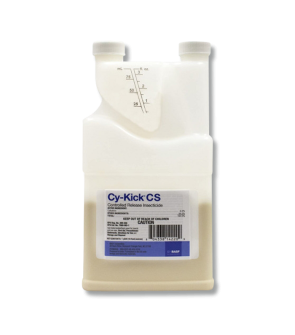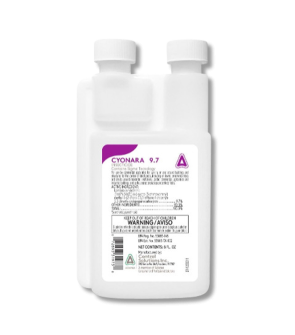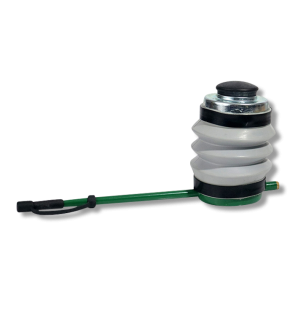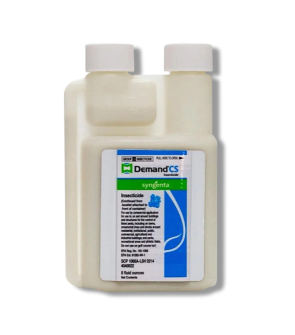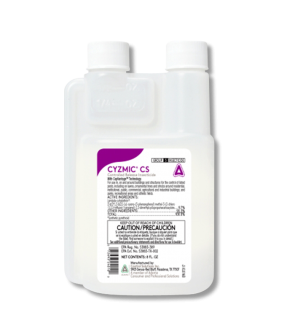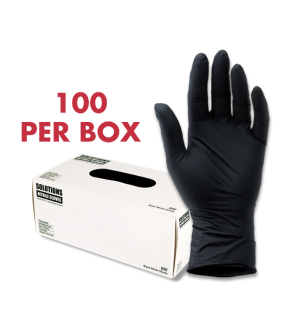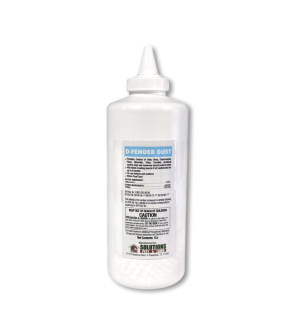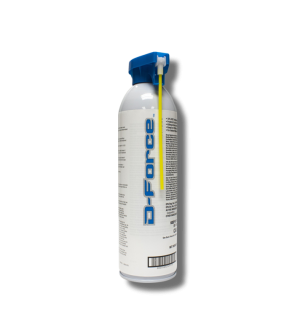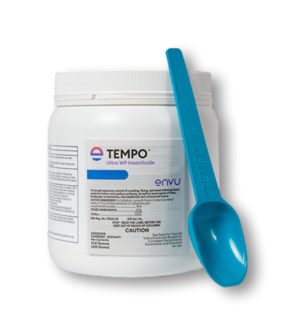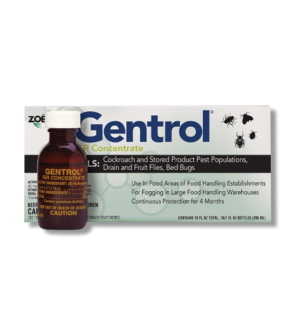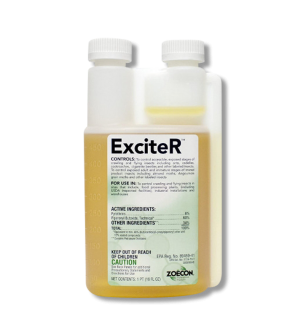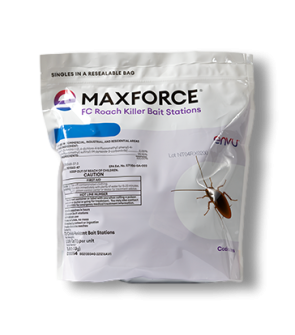Gain access to personalized product screening, the best pricing, rewards, and more!
Most Effective Products
Lesser Grain Borer Control: How To Get Rid of Lesser Grain Borers
This page is a general is a lesser grain borer control guide. Using the products and methods suggested you will get control of lesser grain Borers. Follow this guide and use the recommended products and we guarantee 100% control of lesser grain borers.
Lesser grain borers can become a problem for homeowners and businesses across the United States. Lesser grain borers, commonly known as stored grain borer, American wheat weevil, Australian wheat weevil, grain beetle, or grain bark beetle cause quite a significant impact on harvests and stored food goods.
These pests may enter the home by being pre-packaged at commercial food packing facilities, which they invade to feast on grains. Once in the home, they will move around looking for things to eat and places to lay eggs.
While lesser grain borers do not bite, or sting, or even transmit diseases. They can bore into almost anything, from furniture to fabrics, to even paper. They will also contaminate food products and make them unusable. Read on to learn how to prevent and control lesser grain borers with the professional tips and products in our DIY guide.
Identification
Before proceeding with treatment, you must be certain that the type of pest infestation you have is a species of lesser grain borers. Careless identification can lead you to use the wrong or ineffective insecticides, wasting your time and finances. Some distinguishing traits that separate them from other grain borers, such as the larger grain borer, are explained below.

- Lesser grain borers are small, reddish-brown to black-brown beetles measuring 3 mm. Their body is cylindrical, and their head is tucked under the prothorax, so it's not visible from above.
- The adult lesser grain borer can fly and has hardened, rough wing cases or elytra on its abdomen. It is rectangular with a cratered texture (seen as distinctive pits arranged in lines along its length) and rounded corners.
- The antennae have 10 short segments with the last 3 forming an enlarged club.
- This pest has powerful jaws that allow it to pierce through wood and grain.
- The larvae have white, C-shaped bodies with dark heads and six prominent short legs.
- Note that this pest is similar in appearance and habits to the larger grain borer with the exception that this other pest is larger at 4 mm.
Inspection
Once you have confirmed lesser grain borers on your property, you can proceed to the next phase of the control treatment, which is inspection. While it may sound simple, inspection is an important process that helps determine where to apply your products and avoid unnecessarily using them, thus increasing maximum elimination and cost.

Where To Inspect
Lesser grain borers mainly infest whole grains, especially wheat, corn, rice, and millet.
However, they can invade other items such as nuts, wheat, pasta, cookies, dried fruit, corn, books, boxes, macaroni, tobacco, dried flowers, wheat, barley, maize, sorghum, dried potatoes, dried herbs, biscuits, rodenticide baits, and in wood such as in paneling, flooring, and furniture.
Examples of sites where these infested items could be seen are in kitchens, shelves, cabinets, pantries, garages, and other places where food is stored.
In more professional sites, this could be ship holds, flour mills, animal feed mills, and where grain is stored.
What To Look For
Lesser grain borers are the most active during the warmer parts of the year, usually from March to November.
If your home has become infested with lesser grain borers, you likely brought in a package from the store that was already infested. The larvae burrow into grains and pupate within. Once they have become adults they create exit holes (about 1 mm) and emerge. Grains can become completely hollowed-out husks with numerous entrance and exit hole.
The adult grain borers leave behind a dust-like substance from their feeding activity.
The presence of lesser grain borers can also be noticed with a sweet, musty odor. This odor is caused by male lesser grain borers trying to ward off other male grain borers and lure the females.
Treatment
Once you have confirmed lesser grain borer activity it is time to begin treatment. Before beginning the treatment, be sure to wear the proper personal protective equipment (PPE).
The primary method of control for lesser grain borers in residential properties is the removal of the source and sanitation. Next, use a combination of residual insecticides like D-Fender Dust and non-toxic traps such as Pro-Pest Pantry Moth & Beetle Traps.
Step 1: Clean and Toss Away Food Items

The first step is to clean out your pantry. Start by throwing out boxed and bagged foodstuffs.
That sounds extreme, but if you have found at least one infested package, odds are there are borers and larvae in your other packaged foods.
Set aside everything else from the pantry, then vacuum all cracks and crevices in the pantry’s shelving. Small pantry pests may be found in these tight spaces as they travel from product to product. Be sure to throw out the vacuum’s contents outdoors when you’re done.
Wipe down the pantry shelves and other surfaces with warm water and a gentle soap to clean up any food residue.
Do not use any strong detergents or bleach. Harsh cleaning products will repel pests away from any insecticides you want them to make contact with.
Once the area is thoroughly cleaned and the infested food has been disposed of, treat the areas surrounding the infestation with products like Gentrol Complete Aerosol.
Gentrol Complete Aerosol is an Insect Growth Regulator, or IGR, that stunts the growth of larvae, preventing them from developing into reproductive adults. Without a fresh generation of adult borers to reproduce, the infestation will cease when the remaining pests die over time.
In food preparation areas like the kitchen, apply this product as a spot treatment into cracks, crevices, and voids where pests are known to harbor. Treat behind, underneath, and around appliances like the stove or refrigerator.
Finally, use caulking to seal and close off any cracks and crevices found inside the areas where food goods are stored.
Before applying products, make sure all food goods are cleared off the cabinets, shelves, or pantries and that these areas are completely empty.
Step 2: Apply D-Fender Dust

D-Fender dust is ready-to-use insecticide dust that offers a powerful knockdown against pests, including lesser grain borers. Once applied, this product will create an 8-month residual when undisturbed.
This product is undetectable by pests, so as they travel through treated areas, they unknowingly contact the insecticide. On contact or if ingested, the product impacts the pest’s nervous system, rendering it unable to function.
Determine how much D-Fender Dust to use by measuring the square footage of the treatment area. Measure the length and width of the area in feet, then multiply them together (length X width = square footage).
All food processing surfaces and utensils should be covered during treatment or thoroughly washed before use.
Like with the previous application, do not apply this product into areas where food is stored, but rather, apply it to the surrounding areas.
If your pantry was infested, treat the kitchen it’s connected to.
We recommend you apply this product with a handheld dust applicator to treat deep into cracks, crevices, and voids. On proper application, no dust is visible from a normal perspective.
Fill your duster halfway to leave enough room for air circulation.
Apply D-Fender Dust at the rate of 1 oz. per 125 sq. ft. or 1/2 pound per 1,000 sq. ft.
Stick the duster’s spout into the area to be treated and lightly puff a fine, even layer of product. The amount of dust you output will depend on the force applied when you squeeze the duster and the position the duster is held in.
Treat cracks, crevices, and voids that pests are known to harbor in. In kitchens, you will want to treat behind and underneath appliances like the stove and fridge and behind light switches or outlet covers.
In other areas, D-Fender Dust may be applied behind, underneath, and around furniture and containers, but not inside them. Remember, dust should not be visible.
Once settled, D-Fender Dust will protect treated areas for up to 8 months.
A follow-up application may be made after 10 days if the activity is still prevalent, but you cannot exceed more than 2 applications per year.
Allow dust to settle in treated areas before allowing people and pets to reenter.
Step 3: Apply Pro-Pest Pantry Moth & Beetle Traps

These non-toxic traps contain pheromones that attract many stored product pests.
Simply peel off the wax paper, then fold the trap into a tent. You can set the trap on a shelf or hang it to catch different crawling or flying insects.
One trap will cover an area of up to 300 square feet.
Any pantry pests in the area will be drawn to the trap and become stuck on the glue. Dispose of these traps when full or when 90 days have passed.
Prevention
After the lesser grain borers have been eliminated from your property, it is important to implement preventative measures to ensure they do not return. Below are several preventative measures you should take to fight against future reinfestations of lesser grain borers.
- When buying dry foods at the grocery store, examine the packaging. If you can see the product through transparent packaging, try to look for any signs of infestation. Lesser grain borers and their larvae are often burrowed into grains, so look for any openings in the package. If you see any holes, rips, or tears in the packaging or signs of feeding activity, pass that item up.
- It’s best to keep food in tight-fitting or sealed containers. Put cereals, grains, and flour in containers that can be tightly air-sealed. Pet food and bird seed are often overlooked and highly conducive for pantry pests, so it’s important to also store your pet food in sealed containers.
- By keeping food in air-tight containers, you can stop infestations from spreading. If an infestation starts inside a sealed container, that means the food was already infested with eggs before it went in, and you can throw it out without risking the rest of your pantry.
- Regular sanitation of food storage areas and the surrounding areas is key to preventing any infestation from spreading. Wipe down pantry shelves, vacuum or sweep the floors, and clean other surfaces to remove any food sources for pantry pests.
- Finally, keep up with regular pesticide applications to ensure protection throughout the year. Reapplications with Gentrol Complete Aerosol may be made in 2 to 4-week intervals, D-Fender Dust will protect treated areas for up to 8 months when undisturbed in a dry location, and Pro-Pest Pantry Moth and Beetle Traps should be checked regularly and replaced every 3 months.
Key Takeaways
What are Lesser Grain Borers?
- Lesser grain borers are beetles commonly found in a wide variety of food and have been known to destroy book bindings, paper boxes, and the wood of furniture.
How to Get Rid of Lesser Grain Borers
- Remember that getting rid of the infested item is the most important step in control. After you have performed the proper cleaning and disposal of food items you will need to apply D-Fender Dust. We also recommend laying out the Pro-Pest Pantry Moth & Beetle Traps.
Prevent Lesser Grain Borer Reinfestation
- To prevent lesser grain borers, clean and treat sites with D-Fender Dust and apply Gentrol Complete Aerosol.








